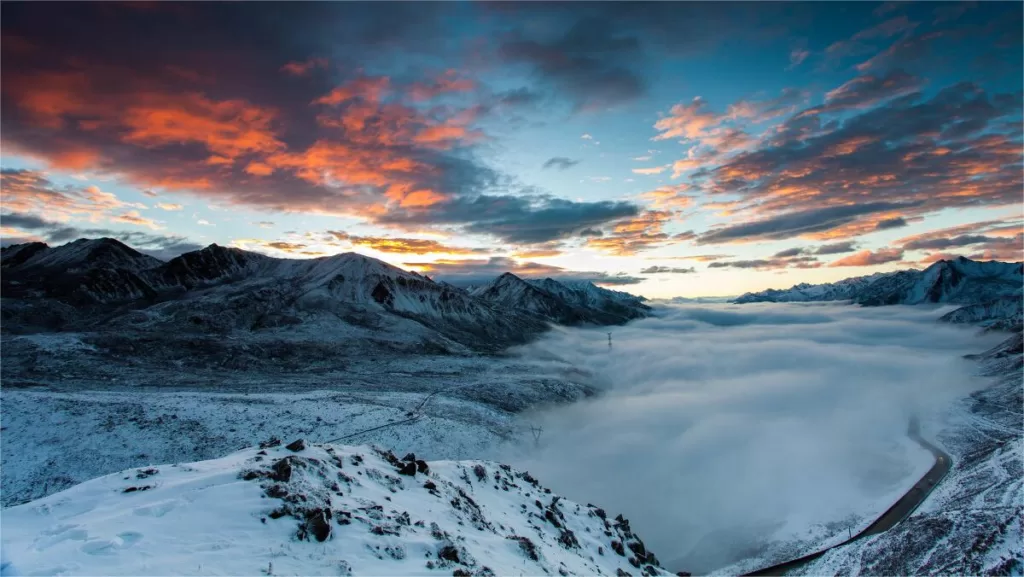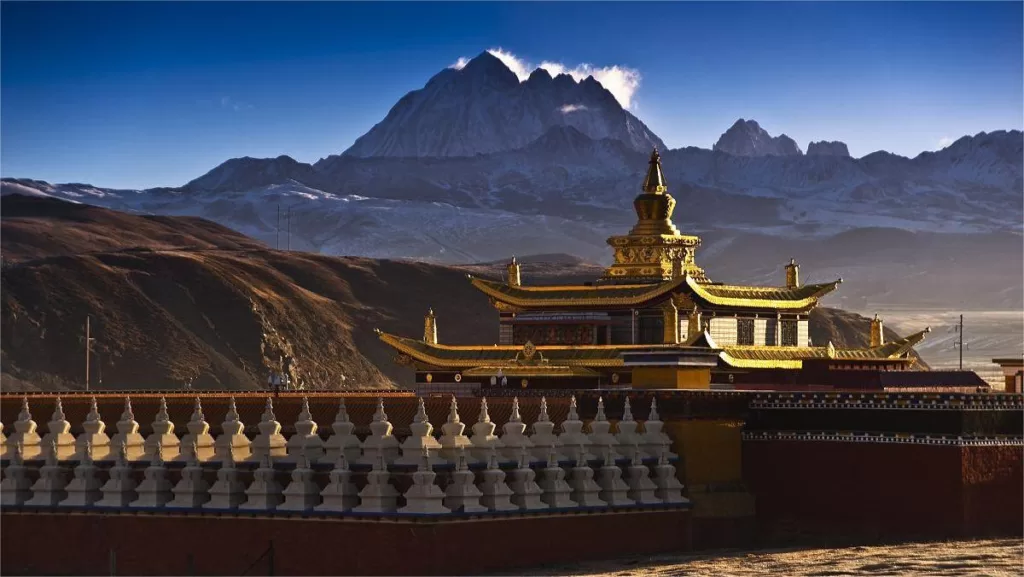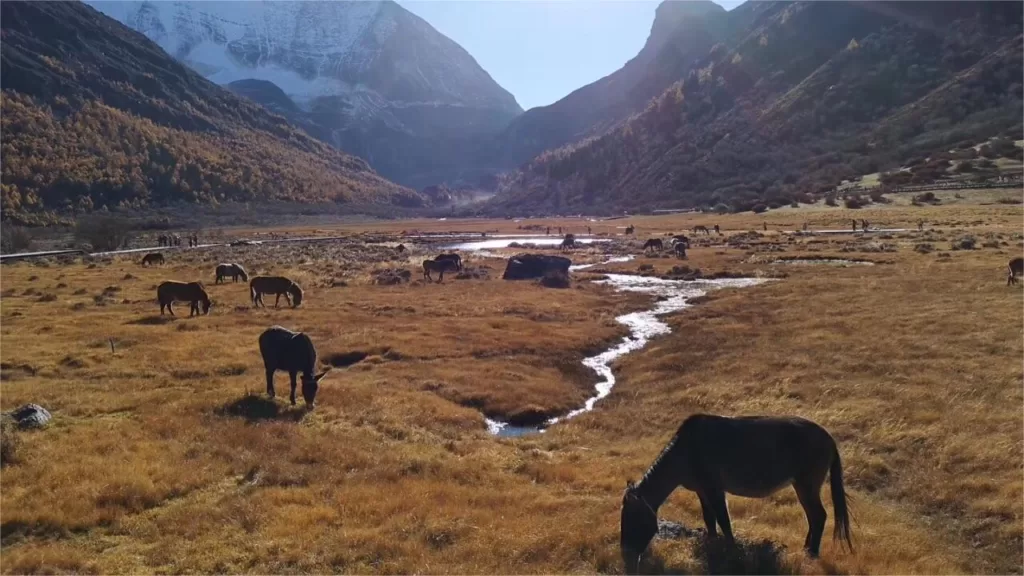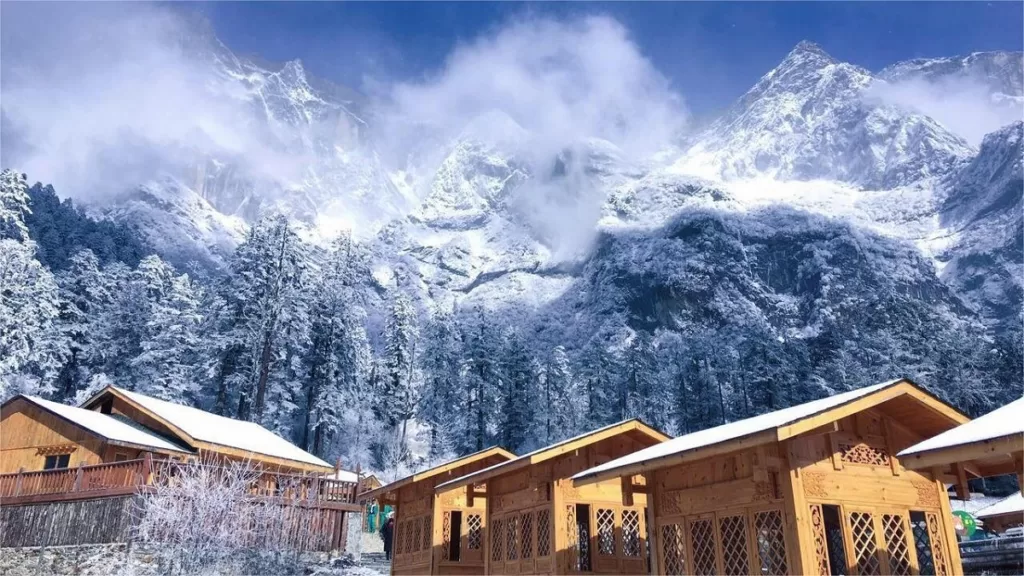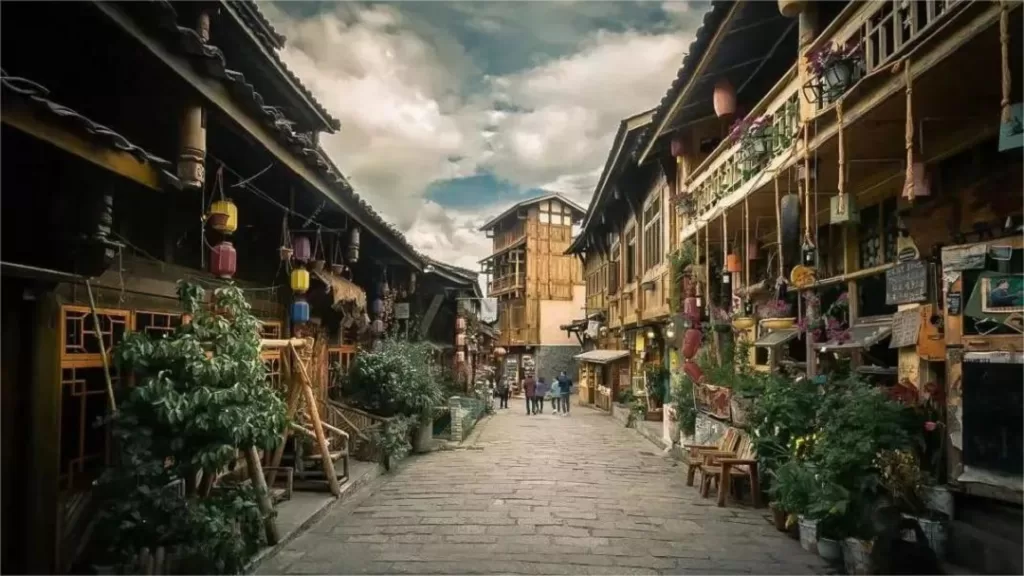Yarchen Gar Monastery (亚青寺), located in the Baiyu County of the Garzê Tibetan Autonomous Prefecture in Sichuan Province, China, was established in the year 1985 under the guidance of the accomplished lama Lama Achuk Rinpoche. Renowned for its spiritual significance, the monastery is particularly unique for its large population of over ten thousand practitioners, predominantly comprising women, making it comparable in prestige to the renowned Larung Gar Buddhist Academy in Kham.
Situated on a grassy wetland surrounded by mountains on all sides, Yarchen Gar features thousands of small wooden huts where devotees reside. The intricate network of rivers envelops the entire monastery, creating a picturesque landscape. During the serene moments of dawn and dusk, smoke rises from the chimneys, and the rivers shimmer with golden reflections. The melodious chants of scriptures, carried by the wind, create a transcendent ambiance, akin to celestial music that resonates with the hearts of those present.
Yarchen Gar Monastery is known for its strict monastic discipline, and practitioners who embark on retreats here find themselves naturally adhering to rigorous self-discipline. Smoking, drinking alcohol, and consuming meat are strictly prohibited throughout the monastery, and even the local eateries are exclusively vegetarian. For visitors, there are modest guesthouses and accommodations within the monastery premises, providing an opportunity to experience the unique lifestyle and spiritual atmosphere of this sacred Tibetan Buddhist enclave. The austere beauty of Yarchen Gar, both in its physical setting and spiritual practices, offers a profound and immersive encounter with Tibetan Buddhist culture and devotion.
Table of Contents
- Basic Information
- Location and Transportation
- Highlights of Yarchen Gar Monastery
- Vlog about Yarchen Gar Monastery
- Useful Tips from Reviews
- Other Attractions in Garzê
Basic Information
| Estimated Length of Tour | Half a day |
| Ticket Price | Free |
| Opening Hours | 24 hours a day, 7 days a week throughout the year |
Location and Transportation
Yarchen Gar Monastery is situated in the Garze Tibetan Autonomous Prefecture of Sichuan Province, China. Nestled within the rugged and breathtaking landscapes of the Tibetan Plateau, this monastery finds its home in the remote region of Baiyü County.
To get there, tourists can first fly to the Garzê Gesser Airport and then transfer to a coach to cover the remaining 150 kilometers. But the most convenint way is to drive yourself, which saves a lot of time and allows you to enjoy the breathtaking scenery along the road.
Highlights of Yarchen Gar Monastery
Vast Monastic Community

Yarchen Gar Monastery is renowned for its vast monastic community, comprising thousands of dedicated monks and nuns. This thriving congregation creates a spiritual tapestry of devotion, meditation, and religious scholarship. Nestled in the Garzê Tibetan Autonomous Prefecture of Sichuan, China, the monastery’s communal living fosters a strong sense of unity, facilitating the sharing of wisdom and the practice of Tibetan Buddhist traditions. This remarkable assembly contributes to the monastery’s vibrant atmosphere, making Yarchen Gar a unique center for spiritual growth, cultural exchange, and the preservation of Tibetan heritage on an extraordinary scale.
Scenic Beauty

The scenery surrounding Yarchen Gar Monastery is a breathtaking testament to nature’s grandeur. Located in the Garzê Tibetan Autonomous Prefecture of Sichuan, China, the monastery is nestled within the rugged embrace of the Tibetan Plateau. Towering mountains, pristine rivers, and expansive valleys form a majestic backdrop, evoking a sense of awe and serenity. The tranquil landscape, adorned with fluttering prayer flags and traditional Tibetan architecture, harmonizes with the spiritual ambiance of the monastery. This natural beauty creates an environment conducive to reflection, meditation, and a profound connection with the essence of the Tibetan highlands.
Cultural Experience
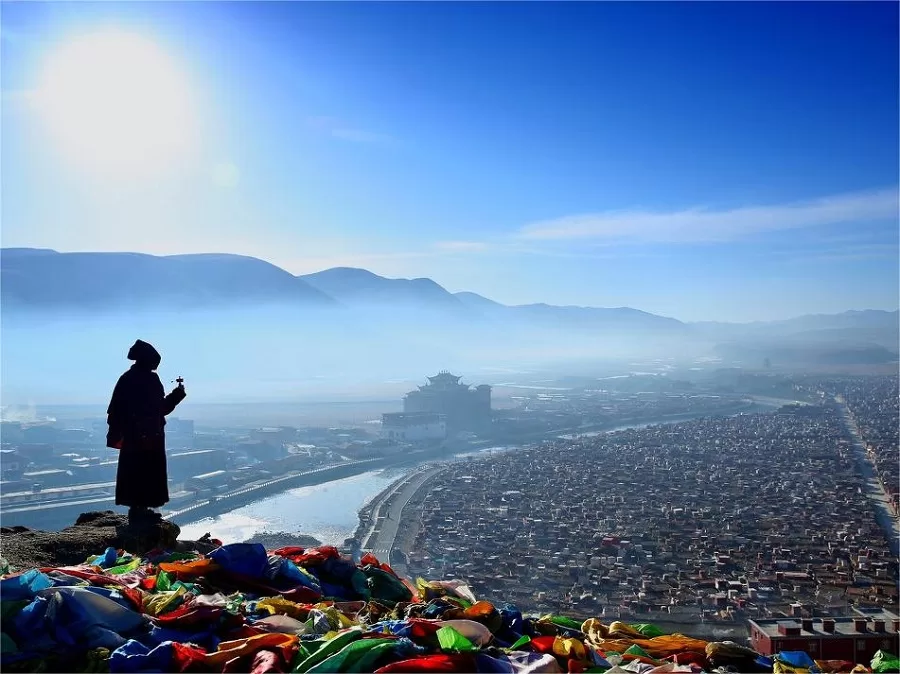
Immersing oneself in Yarchen Gar Monastery offers a rich cultural experience that resonates with the heart of Tibetan heritage. Amidst the stunning landscapes, visitors encounter vibrant prayer sessions, intricate ceremonies, and the authentic rhythm of monastic life. The colorful tapestry of prayer flags, ornate stupas, and traditional architecture embodies centuries of Tibetan culture. Engaging with monks, nuns, and fellow travelers provides insights into daily rituals, philosophies, and art forms, allowing a profound connection to flourish. Yarchen Gar’s cultural ambiance offers a transformative journey, enriching understanding and fostering respect for Tibet’s remarkable traditions.
Pilgrimage Destination

Yarchen Gar Monastery stands as a revered pilgrimage destination, drawing spiritual seekers to the heart of the Garzê Tibetan Autonomous Prefecture. With its vast monastic community, sacred rituals, and stunning natural setting, it offers pilgrims a profound opportunity for reflection and devotion. The monastery’s serene ambiance, set against the backdrop of the Tibetan Plateau’s majestic landscapes, enhances the spiritual journey. Pilgrims engage in circumambulations, prayer sessions, and interactions with devoted monks and nuns, fostering a deep connection to Tibetan Buddhism’s roots.
Education and Learning

Yarchen Gar Monastery serves as an esteemed center for education and learning. Amidst its vast monastic community, monks and nuns engage in the scholarly pursuit of Buddhist philosophy, scriptures, and traditions. The monastery’s halls resonate with the echoes of ancient teachings, fostering intellectual growth and spiritual understanding. Through rigorous study sessions, discussions, and mentorship, Yarchen Gar cultivates a deep connection to Tibetan Buddhism’s profound wisdom. This commitment to education enriches the spiritual experience, nurturing a holistic journey of mind and soul in harmony with the monastery’s tranquil surroundings.
Vlog about Yarchen Gar Monastery
Useful Tips from Reviews
- Understanding the Layout:
- Yarchen Gar Monastery is in the Yarchen area and consists of multiple temples.
- It’s known as a nunnery (寺庙) for female practitioners (觉姆 in Tibetan).
- The area is divided by a river, with the nunnery section surrounded by the river, forming an island. Monks are located outside the island.
- Visitor Restrictions:
- The living area within the nunnery is restricted for men, but Yarchen Gar Monastery allows male visitors.
- Scenic Views:
- The best viewpoint is at the mountain’s summit.
- You can drive directly to the entrance of the viewing platform, and parking is free and convenient.
- The wooden boardwalk to the viewpoint is well-maintained, with a moderate incline, making it accessible without strenuous physical effort.
- Accommodation Recommendation:
- Consider staying overnight at Yarchen Gar Monastery to witness the sunset and sunrise, offering the most beautiful views.
- Numerous small guesthouses are available for accommodation, typically priced at around 60 yuan per person. Conditions are comparable to small town guesthouses but generally considered clean and acceptable.
- Dining Options:
- Yarchen Gar Monastery follows a vegetarian diet, and all restaurants offer only vegetarian meals.
- The food is described as tasty, reasonably priced (around 20 yuan per dish on average), and suitable for those adhering to the monastery’s dietary restrictions.






